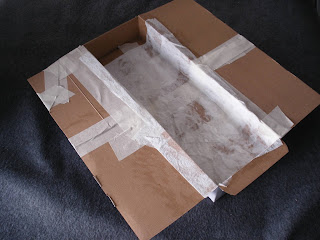Published Work
I have not done a great deal on my blog recently as I have been busy writing and have had some success in getting my work published. In each of the articles listed here I have made and painted the models, written the article and taken the photographs! My work so far includes the following:
"Machete! Wargaming the Ten Years' War in Cuba 1868-1878."
Wargames Illustrated, issue 372, October 2018.
"Cobrar Mambises! An engagement in the Ten Years' War in 19th century Cuba."
Miniature Wargames, issue 431, March 2019.
"Anarchy in the U.K. The Siege of Sidney Street and similar events."
Miniature Wargames, issue 444, April 2020
.
"Puerto Principe. Building a Caribbean harbour and fort for Black Seas."
Wargames Illustrated, issue 391, July 2020.
"Keep Taking the Tablets: Archaeology and Arms in the Anglo-Egyptian Sudan."
Miniature Wargames issue number 449, September 2020.
"Building an Irish Round Tower." Wargames Illustrated, issue 1395, November 2020.
"Club Spotlight, Mailed Fist Wargaming Club." Miniature Wargames issue number 450, October 2020. (Although the editor has credited himself with this piece it is entirely my own work!)
"Building Fort Nassau." Wargames Illustrated, issue number 404, August 2021.
"Corrugated Camp" Miniature Wargames issue number 464, December 2021.
"On the Rod to Mandalay" Miniature Wargames issue number 473, September 2022.
"Mucking about near Mukden." Wargames Illustrated, issue number 419, November 2022.
"Building an Ancient Egyptian Pylon." Miniature Wargames, issue number 478, January 2023
"Shamrocks and Roses." Miniature Wargames, issue number 484, August 2023.
"Djinns from the Dunes: The SAS and the LRDG Attack an Italian Airfield." Wargames Illustrated, issue number 436, April 2024.
"Papyrus, Pulp, and the Oath of Osiris." Wargames Illustrated, issue number 440, August 2024.
"Death on the Nile." Miniature Wargames, issue number 497, September 2024.
"Bang! Gunpowder and Gaming in the Early Era." Wargames Illustrated, issue number 445, January 2025.
"Capture the Crannog." Forthcoming in Miniature Wargames.
"Building a Village of Celtic Roundhouse." Forthcoming in Miniature Wargames.
"Abyssinian Abyss." Forthcoming in Wargames Illustrated.





















